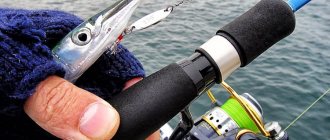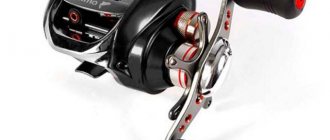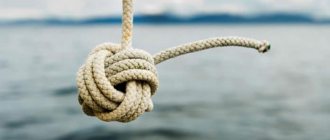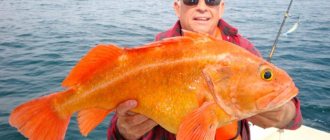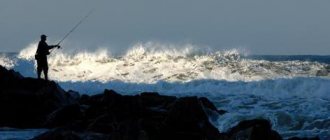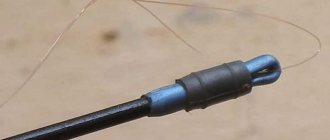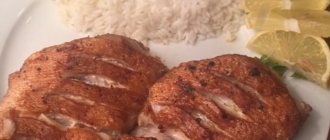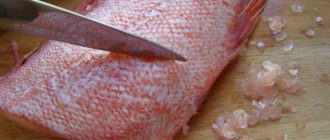The sea is an endless expanse of water on the surface of which winds create serious disturbances. You won’t see such waves on any, even the largest reservoir, which is why the fishing here is special. Fishing at sea is the destiny of strong men, sea wolves, ready for any challenge for the sake of their hobby.
This is not a relaxation on the river bank with a tent and barbecue, but a real fight against the elements and sea monsters such as barracuda or marlin.
Sea fishing requires good physical shape, certain skills, careful preparation of gear and fishing accessories. The latter are subject to special requirements. They must be durable, reliable and resistant to salt water. This is the only way to count on success when going out with fishing rods into the vast expanses of the sea.
Specifics of sea fishing
In addition to its enormous size, the sea surprises with the crystal clarity of the water, ornate bottom topography and the diversity of fish living in it. You can target cod, and the bait will be grabbed by sea bass every now and then. Or vice versa. You never know who will be on the hook next. But in any case, fishing always brings unforgettable pleasure. The inhabitants of the deep sea engage in fierce interspecific competition for existence, they are very mobile and aggressive, they see the bait from a great distance, and grab it sharply and confidently. After such a bite, you can easily lose loose tackle.
Marine species, like freshwater ones, are very dependent on the weather and react sharply to any changes. Bulls, for example, know about negative changes in the atmosphere before meteorologists. They become passive, indifferent to food, hide in various shelters and do not come out until the bad weather ends.
Summer is the best time for sea fishing. Comfortable temperature, lack of precipitation and moderate wind contribute to successful fishing. If the wind is strong and constantly changes direction, the atmospheric pressure fluctuates, and the sea is stormy, it is better to wait out this period patiently. When the weather returns to normal and hungry sea creatures return to their usual way of life, you can go out on the water again and enjoy exciting fishing.
Fish that live in the sea can be divided into two groups: heat-loving and cold-loving. The former spend most of their time in the upper, well-warmed layers of water or in shallow areas where the depth does not exceed 100 meters. Don’t be surprised, 100 meters for the sea is “knee-deep”. The latter, accordingly, prefer to live on the cold bottom of deep depressions, but this does not mean that it is more difficult to catch them. Not at all, you just need to choose the right time for this. The fact is that cold-loving species are periodically forced to leave their usual depths and come closer to the shore in search of food. They do this, as a rule, during periods of prolonged cold weather.
You can fish at sea either from a boat using deep-water gear or from the shore, having previously studied the conditions. It is convenient to fish from various coastal structures, such as breakwaters, breakwaters, moorings, and piers. As a last resort, you can throw the tackle from a low cliff or climb onto a stone lying in the water. It is advisable that the depth at the fishing site be at least 3-4 meters, because large sea fish rarely go to shallower areas. The following places should be considered promising:
with a pebble or pebble-sand bottom;- dotted with shell rock;
- with boulders covered with a dense carpet of brown-green algae;
- near large objects in the water (large rocks, destroyed structures, sunken ships, etc.).
It is advisable to go out to sea on a boat or motorboat accompanied by local fishermen. It is also important to listen to their advice, observe their fishing technique, and do not forget about the rules of behavior on the water.
Fishing from the shore using bottom gear.
Bottom coastal fishing allows the fisherman to get such Black Sea trophies as:
- 1 flounder;
- 2 mullet;
- 3 foreheads;
- 4 croakers;
- 5 garfish and other fish.
The structure of the bottom tackle is quite simple. A spinning rod with a cast weight of more than 300 grams is necessary for long-distance casting and reliable fixation of gear with a load of 200 grams or more on the seabed. If you use light weights, then the waves and sea current will not allow you to fix the bait with hooks on the seabed and fishing will not bring results. The spinning rod is equipped with a spinning reel from 3000, this will ensure reeling of 200 - 300 meters of fishing line. For bottom tackle, use a line with a dough of 30–40 kilograms.
Saltwater angler's tip: When installing a bottom hook, you should put a foam ball on the shank of the hook, which will raise the hook above the bottom seaweed and make the bait more attractive. This tip is suitable for catching small fish, including flounder.
Artificial baits
The right bait is the key to success in sea fishing. The sea is full of predatory species that can be caught by:
wobblers of all types (cranks are especially popular, capable of lifting deep-sea fish from the bottom);- twisters and vibrotails (attractive to many marine predators, not afraid of salt water);
- oscillating spoons (a universal option for any fishing, from a boat, from the shore, a pier or a rock protruding into the sea).
With wobblers everything is clear. This is the most accurate imitation of forage fish, which is effective both in a small river and at sea. Jig baits are in demand due to their low cost. This does not mean that they catch worse, it all depends on the correct choice of the bait itself, the object of fishing and the place. Among the spinners, the best proven ones are jigs - small in size, but at the same time heavy spoons that can be thrown far, even against the wind.
When choosing artificial bait, it is important not to forget about the principle of proportionality. With a large one you can catch large fish, with a small one you can catch something smaller.
Reel and spinning rod for sea fishing
Photo 9. Surf Master Sea Wizard 30R marine reel with meter counter
About the Surf Master Sea Wizard 30R sea fishing reel . Surf Master has released a new reel for sea fishing this season. In general, the standard size is thirty. That is, if we take Akum’s thirty Magda Okuma or some other thirty sizes from other manufacturers, then the spool size is the same - a standard thirty.
Four stainless steel bearings. Full metal interiors. Metal handle, metal spool, carbon body.
We wound the cord. It wound up well. In the form of such a drum. The cord is smaller at the edges, the middle is slightly convex. That is, this is considered an ideal multiplier winding.
Photo 10. Winding the cord onto the multiplier
Don't forget to adjust the free play of the spool and tighten it. Because the weights are large. Adjust so that there are no inertial rotations, no inertial movements at the drum. We return the cord back to the correct side.
In principle, this will allow us to fish at depths of 100-120 m, if the current is not very strong, then 100-120 m without problems.
About the spinning rod for sea fishing Surf Master Thunder test: 300-500 g .
Photo 11. Side rod for sea fishing Surf Master Thunder
Photo 12. Side rod for sea fishing Surf Master Thunder 1.65 m
SIC guides are on this side rod. The Surf Master Thunder rod is proven. A friend of mine caught a 37 kilogram halibut with it. Max, hi, by the way! When I saw in the video how this fishing rod bends, I was very surprised that it could bend like that at all. To me, it’s almost like a ski pole. It has a structure, in general it works very well.
We wound the cord. Overall, simply gorgeous. In terms of capacity - close. Just what you need. In principle, we can recommend it - the 0.5 275 m four-core Power Action cord from AKARA fit into the Sea Wizard reel just like it was at home. The fishing reel will go separately.
Baits and baits
When using bait, the same rule applies as with lures: the larger the bait, the larger the trophy. It should look natural and attractive on the hook. Even if there were no bites, it needs to be changed periodically, since the smell does not last long in salt water, and marine species are mostly guided by their sense of smell when feeding. What can you offer them?
Marine annelids or polychaetes are one of the most catchy baits. You can prepare them right on the shore; to do this, you just need to scoop up a little silt and spread it on the ground in a thin layer. When the mud dries in the sun, the worms will begin to move. Then all that remains is to collect them in a jar. If you can’t get polychaetes, you can try fishing with ordinary earthworms. Gobies and plumes bite well on them.- Sea fleas are large enough animals to be used as bait. Outwardly, they resemble miniature shrimp, only with a small head. They live in algae, where they can be collected. This must be done carefully, because a sea flea bite causes an allergic reaction. Goby and laskir (sea crucian) are excellently caught with this bait.
- Mussels are mollusks similar to pearl barley that live in rivers. Their meat has a strong smell that attracts different fish. To keep it elastic and not fly off the hook when casting, you need to keep it in the shade for several hours. The mussel meat is pierced by piercing it in several places. The protruding parts are carefully cut off with scissors so that small fish cannot eat the bait.
Shrimp - used both as independent bait and as an addition to silicone or iron bait. Conger eels and other large fish are caught using whole shrimp, and for fishing smaller sea creatures, the shelled, soft neck is used.- Crabs are an effective bait that can be used to catch croaker, scorpionfish, eelpout or catfish. Small crabs are hooked whole, while large ones are removed from their shells and only the soft inner part is used. Sometimes it is boiled for secure fixation on the hook. Both fresh crab meat and frozen (previously prepared) meat are suitable.
- Snails are the choice of many fishermen who want to catch wolffish, mullet, weasel, croaker, scorpionfish, roulena, sculpin or stingray. The listed species especially liked the grape snail, which is found in the south of Russia. You can find it in any deciduous forest or dense bush thickets. For fishing, only snail meat is used, which is removed from the shell by breaking it with a stone.
Live baits are suitable for fishing any sea predator, but it is better to select those to which the object of fishing is accustomed. For example, predatory fish that live in the water column can be offered sardine, horse mackerel or anchovy. For catching the inhabitants of the bottom layers (sea bass, flounder, sea bass and others), the same goby, which prefers to live at the very bottom, is suitable.- Sliced fish is good for fishing for katran, navaga, scorpionfish, cod and other representatives of marine ichthyofauna. To catch them, fishermen use narrow strips of fresh fish, cut from the loin. Such pieces are placed on a hook, pierced at 3-4 points.
- Squid meat is a bait for professionals. Hobbyists don't use this bait because they typically don't catch sea monsters like the jack shark.
Tackle for sea fishing
- By root_kingfish
- 02.03.202016.04.2021
Selecting gear for sea fishing
You are on a site that will help save your money.
There is no place left on earth where modern transport cannot take us. Previously, avid fishermen were limited to local reservoirs, but now you can go to the most exotic countries and catch a wide variety of fish. And if you decide to go sea or ocean fishing, then you need to know what gear you will need for this.
Choosing gear for sea fishing is a responsible and important moment. The outcome of the fishing will depend on their quality and reliability. Even super powerful reels and spinning rods, with which we catch 100-kilogram catfish, are not suitable for use at sea. And it's not just about durability. Marine gear should not deteriorate from the action of salty sea water, which has a destructive effect on many materials. But let's take it in order.
Marine reels
The main difference between a reel for sea fishing and a regular one is its resistance to an aggressive salty environment. All mechanisms of the product must be reliably protected, and the metal components of the structure are not subject to corrosion. The undisputed leaders in the production of fishing tackle, including sea reels, are SHIMANO and DAIWA. Their products meet all international standards and requirements. The most famous athletes and champions of fishing tournaments use the products of these companies.
Marine reels are divided into:
1) Inertial – similar to those found on fly fishing rods.
2) Inertia-free – ordinary spinning reels (commonly called meat grinders).
3) Multipliers are power marine reels that resemble small winches. These are the types of reels used to catch giant marlin and sailfish.
Marine multipliers are expensive, but the most reliable. In addition to trolling, they can be used for vertical fishing. Working with such marine reels when fishing is much easier and simpler than with spinning reels.
Rods for sea fishing
When it comes to catching trevally, tuna, wahoo or marlin, you need to be prepared to fight these mighty trophies. Therefore, sea fishing rods are made very strong. It does not require the same sensitivity that spinning rods for river fishing have. You will hardly be able to miss the bite of sea fish. Saltwater rods can be of different lengths and consist of one, two or three parts. The fewer parts, the stronger the rod blank.
Some sea fishing rods have guide rings, others have special rollers that relieve the load when winding the cord. All metal parts of fishing rods for sea fishing must be protected from the damaging effects of salt water. This is what distinguishes sea spinning rods from river ones. We already have a saltwater reel and rod. Let's choose further.
Lines and cords for sea fishing
Marine fishing lines have special requirements, both in terms of strength and wear resistance. After all, even sea baits can weigh hundreds of grams, and constant casting of such weights creates a large load on the fishing lines at the points of contact with the guide rings. It is important that when it comes into contact with stones, shells and corals, the fishing line should not break. In salt water, different types of marine fishing lines are used.
1) Not the usual nylon threads that are used in float and spinning fishing. But here they are of large diameters and have special coatings that protect them from the aggressive marine environment and ultraviolet radiation. Nylon fishing line is inexpensive, but has significant disadvantages. This material stretches greatly and loses strength at the knots. Although marine fishing line is cheap, it will have to be changed more often than braided cord.
2) The main advantage of braided cord is its zero elongation. With it, even at a great distance, you can clearly feel the bite, and the fish are reliably detected. For deep-sea trolling, special sinking marine lines with a lead core are made. The technology for making braids is quite complex - hence the high price. But the cord is indispensable for sea fishing, when the bait is located at a considerable distance from the rod. It should be noted that this durable material is afraid of shells or the sharp teeth of sea predators. Sea braid is almost impossible to tear, but it can be easily cut across with sharp objects. If you buy braided line, use as much spool as possible, but consider the line capacity of your saltwater reel spool.
3) Polyester thread for sea fishing or Dacron. Dacron thread is something between braid and nylon thread. It does not stretch much and has high mechanical strength. This line is not widely used due to properties that do not allow it to be used on spinning reels when casting. Basically, Dacron thread is wound on marine multipliers when fishing vertically.
Sea lures
To catch predatory fish at sea, the same baits are used as for river fishing. But their sizes differ significantly. Lures for sea fishing can weigh tens or hundreds of grams. Heavy lead jigs are used to fish vertically. There is no need to use force casting. The jig sinks to the bottom and twitches methodically. You will need strength when landing fish from great depths.
Poppers have gained great popularity among marine lures. They are used to catch fish in shallow areas of the reservoir. This fishing is very spectacular and exciting. When fishing with sea poppers, you can see the very moment of the bite, which causes strong emotions among fishermen.
On the seas they also fish with well-known wobblers and jig baits. These are various silicone twisters, vibrating tails and octopuses. Silicone is much cheaper than other marine baits, and it is less catchy when properly presented to predatory fish.
Hooks and tees for sea fishing
Sea predators do not forgive mistakes. Sea hooks are as important a component of the tackle as anything else. The difference between sea hooks and river hooks is their increased strength and resistance to salt water. With a dull or weak hook, you can’t avoid an unfortunate mishap. Therefore, never skimp on this element of equipment and buy products from well-known, trusted brands.
You should have different models of sea hooks in stock for different fish. At sea, you never predict who you might run into on your next fishing trip. After use, rinse hooks in fresh water and dry. This way you will extend their service life for a long time. The same applies to marine equipment: swivels, carbines and winding rings. Cheap Chinese counterfeits will fail you at the most inopportune moment. It would be a shame if the long-awaited trophy was lost right next to the boat due to an unbent carbine.
Belt with emphasis for sea fishing
If you intend to catch such strong fish as trevally, marlin, and sailfish, then you cannot do without a belt with an emphasis. It will help make fishing easier and relieve stress from your back and arms. Only in the process of working with a massive fishing rod in a boat rocking on the waves will you appreciate the beauty of this element of equipment for sea fishing.
And for those who are just about to go on the trophy fishing trip of their dreams, we want to give advice. Don't procrastinate. Collect sea gear, put sea bait into boxes and go on an adventure.
No tail, no scales, dear fishermen!
Lure
Carnivorous marine inhabitants are fed with pieces of fresh fish. It can be chopped sardine, mackerel or herring, the main thing is that it has an attractive fishy aroma. You can simply throw the pieces into the water from time to time or place them in a net (feeder) and lower them under the boat. The main task of bait is to attract predators with its smell. The bait works best on a current, thanks to which the aroma of fresh fish is carried away over a long distance. In stagnant salt water, bait is ineffective.
Some features of sea fishing
The angler's reaction to a bite depends on the bait used. If it is an artificial fish, then it is necessary to hook even after an uncertain poke, otherwise the potential prey will sense the catch and swim away. Another thing is fishing with a worm, crab meat, pieces of fish and similar baits. Some species grab them greedily and detect them on their own, while others try them for a long time, and only after making sure that the object is edible do they begin to swallow it. In this case, you will need endurance and the ability to accurately determine the moment when you need to cut. Many beginners rush the hook and literally rip the bait out of the fish's mouth. That is why it is advisable to make your first trips to sea accompanied by an experienced fisherman who will tell you how to correct mistakes.
At the first stage of fishing, a balance should be maintained: do not loosen the line and do not pull it too tight. The flexibility of the rod and the correct setting of the friction brake on the reel will help absorb the jerks of the hooked prey.
If the fish dives and pulls it towards itself, it is better not to risk it and give it a little monofilament or cord so that it can be reeled in again later. You can force the fight after it weakens, appears on the surface and takes a breath of air. The surrendered prey is pulled to the shoreline (side of the boat) and taken into the landing net.
What might you need for trophy sea fishing?
Those who are in the mood for serious trophy fishing cannot do without a watercraft. Large sea fish rarely come close to the shore; usually you have to look for them at a certain distance from land. Of course, renting a yacht with all the amenities is expensive, but a small speed boat made of light aluminum alloy is affordable for most. It will quickly take the fisherman to the right place.
It is important that the vessel is as comfortable and convenient for fishing as possible. It is welcome to have seats, luggage compartments, containers for caught fish, special mounts for fishing rods, and an awning that protects from the scorching sun and precipitation. Of course, the boat should have a satellite navigator, because it’s easy to get lost in the vast expanses of water. Well, the best assistant in the fishing process will be an echo sounder - a device that shows depth, bottom surface topography, the presence of fish and even water temperature.
Video on the topic:
Sea Fishing: tackle, bait and equipment. “About Fishing Seriously.”
06:47
We prepare gear for sea fishing. Expert advice.
13:48
Installation of equipment for sea fishing
10:48
The boilers are UNDER THE SHORE, but the jig is NOT TAKEN. Sea fishing from the shore in the off-season. 2019/05
24:24
narybalke
Types of spinning rod models
On the market representing products related to fishing equipment, there are two spinning models, one has rings, the other has rollers. The latter, with rollers, is preferred by fishermen. The justification is the fact that the presence of this element reduces the wear of the braid.
Read here Rigging a float rod - a step-by-step description from A to Z. Step-by-step description of the rig from start to finish (100 photos)
In practice, it has long been established that rings on spinning rods do not have a negative effect on the fishing line. When using the ring model at sea, the role of a lubricant that reduces friction is taken over by salty sea water.
